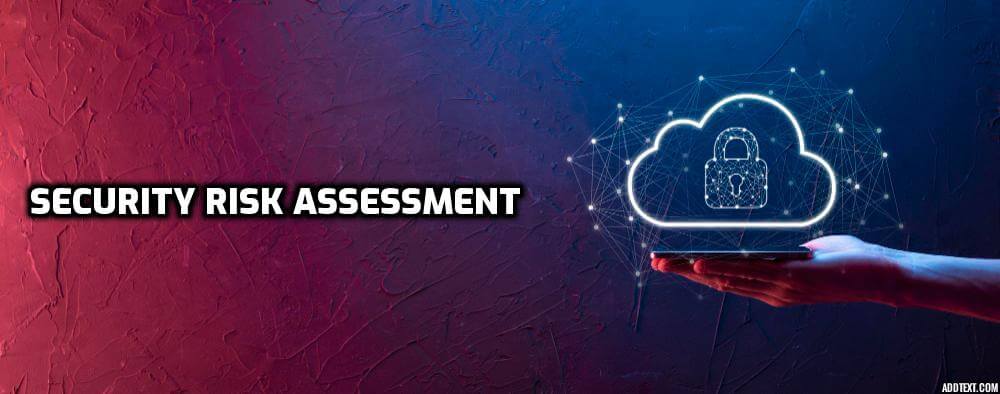A successful large-scale business is hardly imaginable today without an integrated digital solution promoting growth and flourishing. The analysis of potential threats to the informational security of corporate software is a must for any company willing to win the customer’s trust and save money on eliminating cybercrime outcomes.
The Ponemon Institute research states that 77% of companies are not prepared enough to deal with threats of cyber-attacks and data breaches, which results in the global increase of digital frauds. Thus, around 1168 weekly attacks per organization occurred in 2022, based on the Check Point report.
Thus, every business should take the best measures to prevent the negative impact of cyber attacks and data leaks, as they have a high potential of destroying the entire business. Hence, security risk assessment is a crucial measure for the timely detection and repair of vulnerabilities.

What is a Security Risk Assessment
Basically, it is a comprehensive and continual analysis of risks and application vulnerabilities that allows looking at the software from the cybercriminal’s perspective and controlling compliance with regulatory requirements.
Risk assessments are typically designed to meet the purpose and scope of each particular business and may include overall checks of business infrastructure, server, system, network, applications, data storage security, company policies, and third-party safety.
Quality threat evaluation may prevent sensitive or important data leaks, human errors, hardware and software failures, phishing and denial of service attacks, misconfigured settings, supply chain interference, etc.
As a matter of fact, the essence of risk evaluation lies in identifying both external and internal threats, assessing their influence on the organization’s assets, and preparing a cost-effective plan to prevent these dangers.
Corporations interested in increased informational security of their systems should conduct the analysis regularly – at least once a year.
Today, it’s possible to fix any software bugs representing a danger to information security as there are numerous assessment methodologies.
Depending on the type of request, a specialist may conduct risk evaluation by applying the most case-appropriate technique, as there are many of them nowadays.
The depth of risk assessment models depends on several factors: the scale, resources, and assets.
Due to the limited budget and time, many organizations resort to generalized assessments that do not always provide a detailed mapping between assets, associated threats, and risks.
In this event, one should resort to a more comprehensive evaluation.
Steps Toward Efficient Assessment
Initializing the Risk Assessment Process
Like any other business process, the procedure starts with the planning and allocation of human and technical resources, as no system in the world allows 100% automation of the risk assessment process without specialists today.
Identifying and Evaluating Assets
For this important stage to run smoothly and efficiently, one should decide what to protect. It is not enough to perform an inventory check of the organization’s IT infrastructure, though describing and assessing each asset are essential. The procedure should be conducted based on principles of confidentiality and availability of the information processed.
Hence, for correct asset assessment, one needs to answer the following questions:
- What information is processed?
- How crucial is it for the organization?
- What business process is the asset a part of?
- How important is this business process for the organization?
This stage allows estimating the maximum acceptable level of risk from the point of view of business reputation and economy.
Defining the Intruder Model
The key objective of this step is to figure out a potential source of security risks. By thorough investigation of preceding incidents, one can model possible threats as the existing evidence gives the idea of weaknesses to be eliminated.
The blind spots may be predicted when analyzing cybercrime cases in organizations of the same industry (generally, this information can be found in open sources).
One should bear in mind that natural phenomena like floods and earthquakes may also act as a risk to the information security of systems. Thus, the business software should be designed to detect and prevent attacks from all possible sources.
Picking out Vulnerabilities and Choosing Preventative Measures
This stage is designated for detecting organizational and technical vulnerabilities with subsequent determination of possible attack vectors. Each vulnerability is then given a particular characteristic. Let’s take sufficiency as an example. The higher the sufficiency is, the more likely the occurrence of a potential threat is.
Specialists choose the most appropriate measure to tackle the problems based on the existing and potential threats. The level of method efficiency is inversely proportional to the likelihood of a security-related problem.
With data obtained from previous stages, the corporation gets a list of risks to be analyzed and classified into acceptable and unacceptable. A well-prepared plan is necessary for effective risk processing and implementing countermeasures.
Summing up
Security risk assessment is an integral part of the entire process of organization management because timely detection and addressing threats allow for reducing the possibility of reputational and material damage.